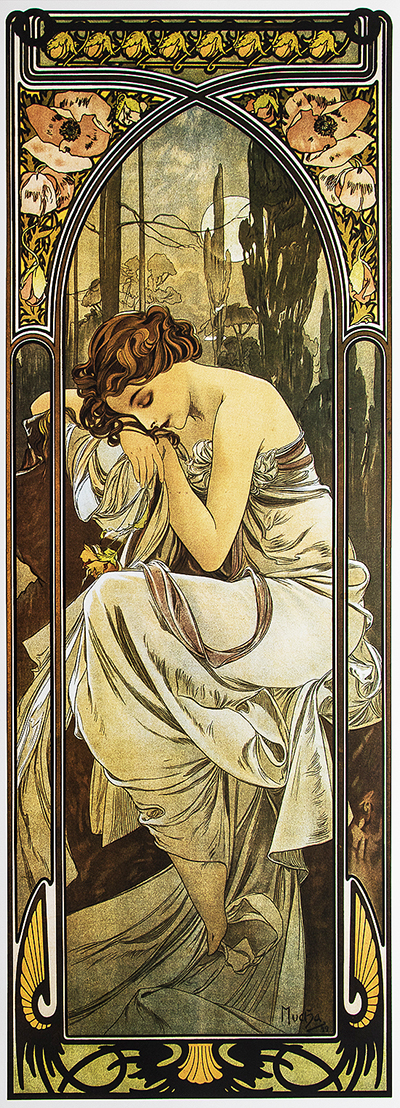The work of the Moravian (Austro-Hungarian) artist Alphonse Mucha perhaps epitomises the Art Nouveau style more than that of any other artist. Night, also known as Night’s Rest, is one of a series of works that depict and are known as The Times of the Day.
It is typical of Mucha’s style, combining elements of design and traditional art in the Art Nouveau style. These four lithographs, executed in 1899 during the height of Mucha’s popularity, feature images of women adorned in flowing robes against backgrounds from nature and are typified by the delicate use of colour and swirling depictions of natural surroundings. The framing of each depiction recalls the stained glass and form of Gothic architecture, and the combination is at once both harmonious and breathtaking.
Mucha's popularity soared after he created a poster for the actress Sarah Bernhardt, advertising her role in the play Gismonda. The actress subsequently commissioned him to create further such work for a six year period. The Art Nouveau style, with inspiration taken heavily from the swirling forms of plants, leaves and flowers, was hugely popular before the rise of Art Deco, and has remained so today. Mucha’s work has perhaps remained popular because of its affinity with the themes of nature and its blend of artistic genius, magnificent execution and ability to combine elements of design with formal artistry.
In the 1960s Mucha's work enjoyed a revival, perhaps due to the symbolism of flowers and nature ringing true within the peace and 'hippy' movements. The style of Art Nouveau, and Alphonse Mucha, also fitted well with the 'psychedelic' trend in the 1960s and this is testimony to the timelessness and adaptability of Mucha’s work.




